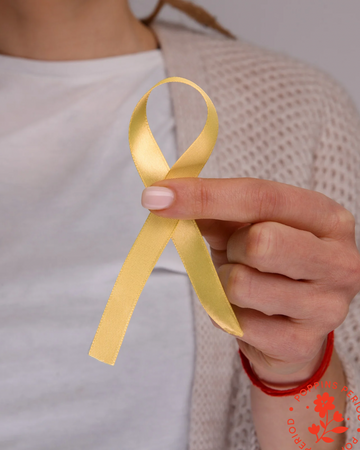What Is Endometriosis? Understanding a Condition That Affects 1 in 10 Women
Sep 09, 2025

What is endometriosis?
Endometriosis (or “endo” for short) is a chronic condition where tissue similar to the uterine lining grows outside the uterus, often on the ovaries, fallopian tubes, bladder, bowel, and surrounding pelvic tissue.
This tissue responds to hormonal changes just like the lining inside the uterus: it thickens, breaks down, and bleeds with each cycle, but it has no way to exit the body. That can lead to inflammation, scarring, and sometimes cysts or adhesions (when organs start sticking together).
It’s more than “just a bad period.” Endo is a full-body condition that can affect digestion, fertility, and even mental health. Despite these potentially debilitating symptoms, it’s massively underdiagnosed.
Symptoms of Endometriosis
Not everyone with endo experiences the same symptoms, but common signs include:
- Severe period pain that interferes with daily life
- Pain during sex or pelvic exams
- Chronic lower back or pelvic pain
- Bloating, constipation, or diarrhea, especially around your period (“endo belly”)
- Fatigue and low energy
- Infertility or difficulty conceiving
Some people have no symptoms at all. Others are told for years that their pain is “normal” or “just bad cramps.” YIKES!
How Is It Diagnosed?
Diagnosis can be frustratingly slow — the average delay is 7–10 years. That’s because symptoms often overlap with other conditions (like IBS or pelvic inflammatory disease) and because pelvic pain is still frequently dismissed.
The gold standard for diagnosis is laparoscopy- a minimally invasive surgery that allows doctors to see and biopsy the endometrial-like tissue. Imaging like ultrasound or MRI can help, but they won’t catch all cases.
What Causes It?
We don’t have a single, definitive cause, but current theories include:
- Retrograde menstruation (when menstrual blood flows backward into the pelvic cavity)
- Genetics (it tends to run in families)
- Immune system dysfunction
- Environmental and hormonal triggers
What we do know: you didn’t cause it, and it’s not just “in your head”.
How Is It Treated?
There’s no “cure,” but there are multiple ways to manage symptoms (that aren’t just having a baby):
- Hormonal therapy (birth control, IUDs, or GnRH medications to suppress periods)
- Laparoscopic excision surgery to remove endometrial implants
- Diet and lifestyle support, including anti-inflammatory eating, pelvic floor therapy, and supplements like magnesium
- Pain management with NSAIDs or nerve-blocking treatments
- Support groups and mental health care, because chronic pain is exhausting
At Poppins Period, we believe in wholistic, integrative care, blending clinical treatment with supportive tools and education.
Living with Endo: What You Should Know
- Painful periods are not a badge of honor.
- If your period is making it hard to work, go to school, or live your life, that’s a red flag.
- You deserve to be listened to and believed.
- It’s okay to try different tools: heating pads, pelvic PT/OT, acupuncture, magnesium mist, reusable period care, or anything that brings you relief.
📌 Want more support?
Explore our blog and resources on managing period pain, cycle syncing, and choosing the right products for your body, especially if you’re navigating endo.
